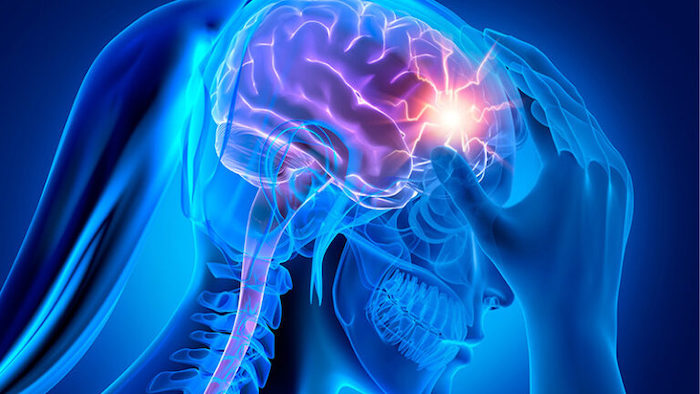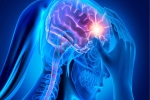
Migraine is a common condition, affecting more than 37 million people in the United States and up to 148 million worldwide. And some evidence suggests that migraine prevalence might be increasing globally.
According to the World Health Organization (WHO), migraine is around twice as common in women than men.
The primary migraine symptom is often a moderate to severe headache, and 85% of people with migraine headaches experience throbbing pain. However, for around 60% of people, the pain is one-sided, and about 80% of people experience nausea and 30% vomiting. In addition, almost everyone with migraine has increased sensitivity to light (90%) and sound (80%).
Below, we tackle 11 myths associated with migraine. We cover medications, caffeine, nutrition, and more. To help dispel these myths, we enlisted the help of three experts:
- Dr. Vernon Williams is a board-certified neurologist/sports neurologist and director of the Center for Sports Neurology and Pain Medicine at Cedars-Sinai Kerlan-Jobe Institute in Los Angeles, CA.
- Dr. Medhat Mikhael is a pain management specialist and medical director of the non-operative program at the Spine Health Center at Memorial Care Orange Coast Medical Center in Fountain Valley, CA.
- Dr. Jennifer McVige is board-certified in pediatric neurology, adult and pediatric headache, and neuroimaging. She is the director of the Concussion Center at DENT Neurologic Institute, Amherst, NY.
1. Migraines Aren’t Serious
“Most types of migraine are not serious; however, they can be chronic and sometimes debilitating and disabling if not adequately treated,” explained Dr. Mikhael.
The authors of one review, which investigated the impact of migraines on quality of life, write that many people with migraines “also experience reduced productivity while at work and disruption of their family, social, and leisure activities.”
It is also worth noting that not all types of migraine are equal. “There is a kind of migraine called hemiplegic migraine that tends to be familial, associated with neurological symptoms, aura symptoms proceeding the migraine, and can lead to stroke,” Dr. Mikhael explained.
However, he is quick to point out that hemiplegic migraine that causes significant weakness or paralysis on one side of the body is rare, affecting around 0.01% of the population. In most cases, the paralysis resolves within hours or days; rarely, it can take 4 weeks. However, in some very rare cases, hemiplegic migraine can cause lasting paralysis.
2. Migraine Is Just A Headache
This is not true, and it is worth noting that not all migraines involve a headache. As Dr. McVige explained, “Migraine is a primary headache disorder and is much more than just a headache. Headaches are only one symptom of migraine, and some migraines don’t have a headache at all.”
According to Dr. Williams, “a migraine is clinically defined as a specific type of headache that [a person feels] more intensely, and usually has accompanying symptoms in addition to the pain felt in the head.”
According to Dr. Williams, a person with a migraine rather than a headache will experience a combination of the following symptoms:
- Moderate to severe pounding or throbbing pain that feels as if it engulfs the entire head or shifts from one side of the head to the other.
- Heightened sensitivity to sounds, smells, or light.
- Vision troubles, including blurriness, bright or flashing dots, or wavy or jagged lines.
- Abdominal problems, which can include loss of appetite, nausea, vomiting, or an unsettled stomach.
Dr. Williams also outlined other differences between a migraine and a headache. For example, he explained that some people might experience a so-called prodrome stage.
He told MNT that some people with migraines “might notice subtle changes in their daily routine up to a day or 2 before a migraine sets in — a sort of warning period.”
Although these changes vary between individuals, he said that a few of the most common prodromal signs are “excessive yawning, depression, irritability, and a stiff neck.”
Some people with migraine may also experience migraine aura. Dr. Williams said:
“Migraine aura is a neurological symptom that immediately precedes the headache. It may consist of visual disturbances (seeing flashing lights or experiencing partial loss of vision that gradually spreads across the visual field), or other sensory phenomena (numbness or tingling gradually spreading across the face or down the arm).”
Although the symptoms are an ominous sign that a migraine headache may be on the way, according to Dr. Williams, there is an upside:
“These warning signs provide an opportunity to initiate treatment very early in the course of the migraine episode, which significantly improves the likelihood that the treatment will be successful.”
Rather than waiting for the pain to come, Dr. Williams told us that taking the medication as soon as possible has the most effect.
This is a myth; caffeine does not cause migraine, but it can be a trigger for some people. Coffee and migraine have a complex relationship.
As Dr. Mikhael told us, “Excessive use of caffeine can trigger migraine. However, caffeine, in general, can help alleviate headaches, including migraine headaches.”
According to Dr. McVige, “Some people find drinking caffeine at the onset of an attack lowers the intensity and can help alleviate some of the pain, but regular use of caffeine as a treatment is not advised.”
To add an extra level of complexity, Dr. McVige told us MNT that drinking caffeinated beverages can start a migraine attack, but that “caffeine withdrawal is an even more frequent migraine trigger.”
In a recent review of the interaction between caffeine and migraine, the authors concluded:
“Overall, based on our review of the current literature, there is insufficient evidence to recommend caffeine cessation to all migraine patients. However, it [is important to highlight] that caffeine overuse may lead to migraine chronification, and sudden caffeine withdrawal may trigger migraine attacks.”
4. Headache Medicine Will Cure Migraine
Currently, there is no cure for migraine, but medicines certainly can help.
“Cure is not the word, symptom control, and prevention of migraine is the correct term,” Dr. Mikhael told MNT, “Migraine medications [aim] toward prevention of migraine episodes and use of ‘abortive medications’ if an episode breaks through.”
5. No Medicines Can Help Migraine
Put bluntly, Dr. Mikhael told MNT, “That is a false statement; several medications are available now to help and control migraine significantly.”
Dr. McVige listed some medications that can ease migraine, including over-the-counter (OTC) analgesics, triptans, calcitonin gene receptor peptide (CGRP) antagonists, gepants, antidepressant medicines, anti-seizure medicines, and beta-blockers.
Effective nonpharmaceutical options are also available.
“Getting at least 8 hours of sleep each night, drinking 8 glasses of water per day, feeding your body with healthy nutrition, and eliminating as many sources of extra stress as possible, will put your body on the express path to raising the threshold of migraines. [This means] that your risk of developing a migraine is decreased, even when exposed to a known trigger.”
Dr. Williams also told us that following a healthy lifestyle may eventually “eliminate the need for taking prescription headache medications.”
This is good news because, as Dr. McVige explained to MNT, “Medications may also (ironically) lead to headaches themselves, in a phenomenon called ‘medication overuse headaches,’ if the rescue medication is being taken too often.”
Dr. Williams also explained that “there are lots of options for prescription medications that are very effective at reducing migraine frequency (so-called prophylactic medications) and others that can stop a migraine in its tracks. If you suspect that you experience migraine headaches, it is worth seeing a doctor who can confirm the diagnosis and work with you to develop a treatment plan.”
6. You Cannot Diagnose Migraine Without An Imaging Exam
According to Dr. Mikhael, this is a “false statement. Migraine is a clinical diagnosis and does not need any imaging to confirm. Imaging is only indicated if the symptoms are unclear or there are neurological symptoms or warning signs. This is when imaging would be warranted to rule out a pathology.”
“There’s no specific test to diagnose migraines,” said Dr. McVige, “[To make an accurate diagnosis], a doctor must identify a pattern of recurring headaches along with the associated symptoms continuing for at least 3 months.”
7. I Cannot Take Any Migraine Medications If I Am Pregnant
“Migraine medications, such as triptans, are relatively safe during pregnancy, particularly after the first trimester,” said Dr. Mikhael, “acetaminophen is safe as well, but some of the preventive anti-seizure medications should be avoided due to the risk of” halting the pregnancy or producing a congenital malformation.
Adding more detail, Dr. McVige explained: “Before getting pregnant, it’s important for people to talk with their doctors about their migraine treatment plan, whether they take OTC, prescription medications, or both.”
“Not all medicines are safe during pregnancy,” she continued, “Some are strictly off-limits, while other medicines can be added back after the critical first trimester. Noninvasive wearable devices are particularly appealing to pregnant women as they have high efficacy with virtually no lasting side effects.”
8. If I Follow A ‘Migraine Diet’ My Migraine Will Never Return
Although nowadays, there is a diet plan claimed to cure all ills, not all of them are effective or backed by evidence.
As for the so-called migraine diet, Dr. Mikhael is unconvinced. He explained that, although “eating healthily and avoiding certain kinds of food that trigger migraines can eliminate the triggering of the episodes,” there are other factors to take into account.
For instance, the migraine diet cannot address “lack of sleep, stress, or hormonal changes.”
In brief, avoiding known triggers can reduce the risk of migraine, but a diet regimen is not a cure.
9. Supplements Can Cure Migraine
Speaking with MNT, Dr. Mikhael rebuffed this myth succinctly, explaining that this is “not an accurate statement or a fact; supplements can help migraine headache or prevent triggering of it, but they won’t cure it.”
As mentioned earlier, there is no cure for migraine, but certain supplements may help prevent migraine for some people. Dr. McVige said:
“Supplements, such as magKnesium, vitamin D, and vitamin B2 are an important addition to the migraine treatment market, but no one vitamin or supplement has been proven to help prevent or relieve migraine for everyone. They help some people immensely and do little for others. This variable response is similar to pharmaceutical medications. “
10. Unless You Experience Aura, It Is Not A Migraine
This is not true. In fact, according to Dr. Mikhael, “most migraines are without aura.”
According to the Migraine Trust, 10–30% of people with migraine experience aura.
11. Researchers Have Given Up Investigating Migraine
“That is false,” said Dr. Mikhael, “researchers never gave up and never will, […] there are several ongoing, important research efforts to address the pathophysiology of migraine and new treatment options.”
“Definitely not!” Dr. McVige responded with similar vigor, “There are […] innovations all the time in the migraine scene, especially over the past 4 years. Recently, neuromodulation devices have entered the market. A new device from Theranica called Nerivio now has [clearance from the Food and Drug Administration (FDA)] for acute migraine treatment”.
“The device is smartphone-controlled and inconspicuously worn on the upper arm, delivering a 45-minute treatment.”
According to Dr. McVige, the device “modifies the pain signals in the brain and is a good alternative to medication.” She concludes:
“We are always finding ways to try and deliver the therapy without exposing people to negative side effects.”
Migraines can be unpleasant and significantly affect daily life. However, pharmaceutical interventions are available that can help. Also, changes in diet and lifestyle can ease symptoms and reduce the frequency of migraines.
As scientists continue to investigate, they are sure to identify better treatments and, perhaps one day, a cure.
Precision Pain Care and Rehabilitation has two convenient locations in Richmond Hill – Queens, and New Hyde Park – Long Island. Call the Queens office at (718) 215-1888 or (516) 419-4480 for the Long Island office to arrange an appointment with our Interventional Pain Management Specialist, Dr. Jeffrey Chacko.













